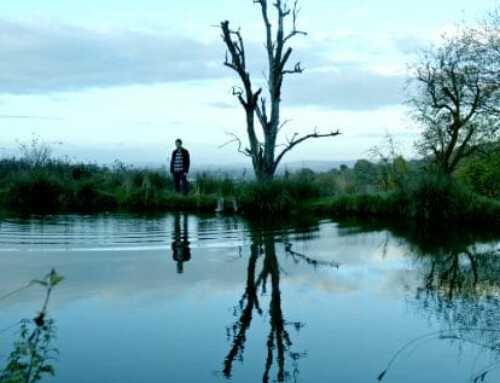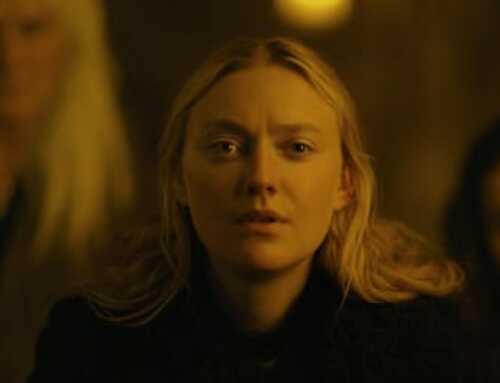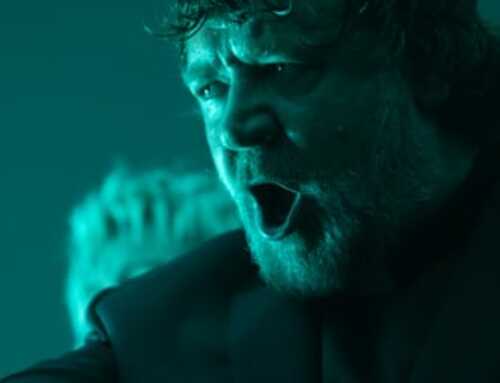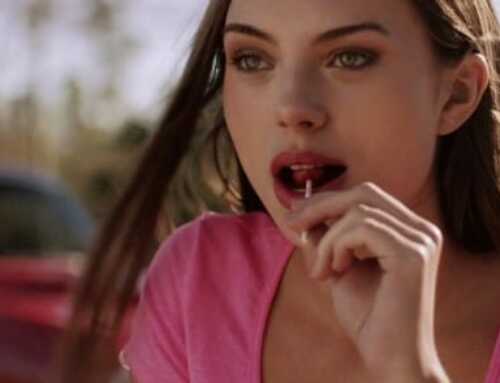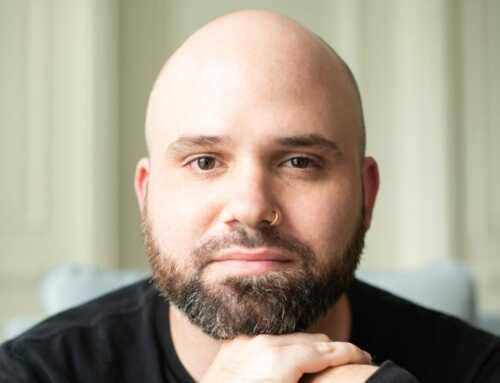The Puppetman, which recently took home the Popcorn Frights Jury Award for Best Feature, is one of the many films debuting as part of this year’s AMC FearFest lineup. Other titles in the lineup include When Evil Lurks, V/H/S/85, Night of the Hunted and Nightmare. The Puppetman synopsis reads: The Puppetman, a convicted killer on death row, always maintained his innocence and that it was an evil force controlling his body as he slaughtered his victims. Now Michal, the killer’s daughter, begins to suspect that there may be some truth to her father’s claim when those around her begin to die in brutal ways. She must try and break the curse of The Puppetman before all her loved ones are killed.

There are many things that stick out about this film, the cinematography by Clayton Moore being one of them. We wanted to learn more about how the look of the film was created, so we conducted the below Q & A with Clayton below.
The Puppetman is now available on Shudder.
-How would you describe the overall look of The Puppetman?
The overall look of The Puppetman is dark and dreary. It was something the director (Brandon Christensen) and I set out to achieve from early discussions in pre-production. We wanted the overall tone of the film to be reflective of the cold winter weather, and the continuous impending danger of the puppet man possessing his next victim.
-You have worked on a few horror films now, why do you think you keep getting attracted to films in this genre?
It’s just one of those things, people typically hire you based on something that stood out to them about your last project. The fact that it’s a fun genre to work in helps as well. Horror taps into some of our most primal fears and so it’s only natural to want to push those feelings, emotions and moods further by utilizing the tools of visual storytelling, be it lighting, camera blocking, editing, music, you name it. I really enjoy shooting horror films, but I would love to branch out as well.
-Are there certain angles or camera techniques that can make horror scenes more scary in your opinion? Did you use any of those in The Puppetman?
I think what makes something more scary is if it’s presented in a naturalistic way. So many times you might see a horror film that has a very strong visual style, in a way that heightens reality and of course they’re leaning into some elements of the genre. But if you watch a horror film that is presented very naturalistically through the lighting, the blocking and composition of the shots, then it tends to feel more grounded in reality and look familiar to how we view the world around us. It really imparts a feeling of “This could actually happen to me” and I think that is what helps to heighten the terror.
This was my approach to The Puppetman. I wanted the lighting to feel very natural and real, albeit dark and mysterious. I tried to avoid getting too stylistic and flashy with anything. It’s the subtlety of my choices, I think, that make it work well.

-You and director Brandon Christensen have collaborated a few times now. Why do you think you work together so well?
Brandon and I have done a ton of shorts, commercials, and music video work together before we began collaborating on his feature films. It’s been a great relationship and over time we have built this sort of shorthand where we can tell what each other is thinking with just a glance. The benefit of that is you get more time on set with the actors as we both can almost run on autopilot once we’re shooting and not have to stop and lose momentum with lengthy discussions about decisions.
-What was the most challenging scene to film in The Puppetman? Why?
The most challenging scene was probably the scene where Michal steps out into traffic on a busy street. We start with a long dolly push from the middle of the street into a close up on her, and then pull back with her as she steps off the curb and into the street, and busy traffic. There were so many elements to the shot: the dolly move, the framing, the focus, the performance, and some lighting gags that all had to be executed in perfect synch. I think we did around 20 takes before we were fully confident that we got the shot.
There were many other scenes that were challenging simply because of the cold weather. Shooting night exteriors in Buffalo New York in the dead of winter is no joke!
-How was the set of The Puppetman different from other productions you have worked on?
The biggest difference was the scale of the production. It was by far the largest project I have done in terms of budget, crew, and scope. Overall, the process was the same; we just had more money and resources to throw at problems. And somehow there still is never enough!
-Did you get to try any different cameras or lenses in The Puppetman that you all didn’t get to in Superhost?
We shoot all of our features on Red. On Superhost, we were on a very tight budget and so we pretty much used what we already owned. On The Puppetman we had a little more money to play with so we were able to use Atlas Anamorphic lenses. We had used anamorphic one other time on a commercial we shot, so we were somewhat familiar with them. Though, going into a feature is much different than a 1 day commercial shoot so there was definitely a learning curve to using the lenses versus traditional spherical glass. After the first few days we got to learn the characteristics of each lens so we got up to speed quickly. I think shooting anamorphic helped render the imagery in a rich, cinematic quality, and I’m glad that we got to use them.
-In a sentence or two, why should people watch The Puppetman?
People should watch The Puppetman because it’s a fun horror film, and there are some really brutal death scenes.
-Has there been a recent horror film that stood out to you?
Hands down, “One Cut of the Dead” (2017). It is crafted so well, and has such a rewarding payoff.
You can learn more about Clayton Moore at https://www.claytonmooredp.com/.


